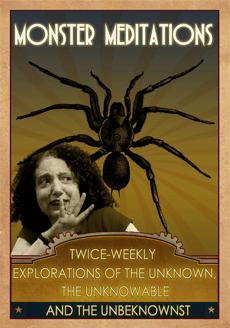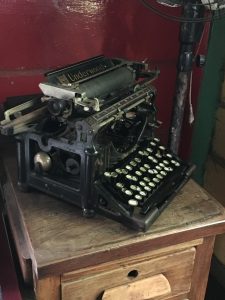I read both vintage novels and novels set in various historical periods. The latter depend on historical verisimilitude and it’s all in the details. I’m not a professional historian, but when an anachronism crops up it makes me jump a little. And the easy to check, minor details make me jump the highest. Obviously when the novel is Steampunk or Fantasy, all bets are off. The anachronisms are part of the game. Dates and facts aren’t important, but… for regular historical settings, it’s best to double-check the details that bring the backdrop of a story to life.
I was watching the new Amazon series ‘The Marvelous Mrs. Maisel’ and one of those easy to check flubs ruined my confidence in the detailed and almost seamless façade of the late 1950s in New York.
It was an easy one to check and it jumped out because I KNEW it was wrong. How did I know? I’m getting old. No, I’m not THAT old! But I know that when I was a little girl—in the late 1960’s women wore stockings with garter belts and not pantyhose.
In the MOD swinging 60’s of 1967, 1968 & 1969, everyone wore fishnets. I remember begging for the shoes I saw in the movie posters for ‘Bonnie and Clyde’ and to wear fishnet stockings like the grownups I saw on TV. Eventually my mom relented and I was rewarded with a pair of white fishnets and the garter belt to hold them up. It was uncomfortable and even my natural stubbornness failed. I hated that garter belt.
And in a matter of months, pantyhose took over the market. If I had to guess, based on my childhood recollections, this was the spring of 1968. The movie came out in 1967, but it took a while for the fashions to filter out to the suburbs. The stockings and garter belt stayed in my sock drawer for years, nesting with my heavy tights and little girl socks. Girls were not allowed to wear pants in my elementary school and I wore tights all the time.
So when Mrs. Maisel made a reference to two-for-one pantyhose, I wanted to scream. A quick Internet search yielded the invention in 1959… but it took a long time to catch on. It wasn’t a good joke and it broke the magical spell of the late 1950s. Historical fiction is a magic act and it’s important not to undermine the spell.
As for my other early ‘fashion passions’…. I also begged for a pair of black & white go-go boots. They would have suited Emma Peel in ‘The Avengers’ and my mother refused. Decades later, I bought a pair and they remained in my closet for years. They were as uncomfortable as the garter belt.






I haven’t watched this show yet, but I look(ed) forward to it. Maybe sometime, but if they can’t get it right, why should we invest? Mad Men did a bang-up job of capturing a time, so there’s already a bar set.
I can commiserate too. As children of the 80s, my hubby & I love The Goldbergs on ABC. We watch with our kids too (not a lot we can all agree on). Anyway, I noticed the dialogue was off recently (i.e. we did not say “She’s so hot!” & a couple more in the same episode. It killed it for me.
I enjoyed the show, but after that ONE tiny mistake I found myself less enchanted. Still, good characters, great clothes and as New Yorker, I enjoyed peeks at the city in an era before-my-time. Verisimilitude really is a magic spell that can be undermined by the wrong slang or the wrong song.
My dad was an Ad Man in the 60s and he laughed off some of the MAD MEN plots developments, pointing out that the show depicted a tiny slice of the industry, the White Shoe agency. They were the agencies with the fewest minority employees, least women outside the secretarial pool, etc. During that time Mary Wells was founding Wells, Rich & Green… But again, the atmosphere in MAD MEN was spot on!!! I flipped out when I noticed a metal step stool with a seat and rubber covered steps, as I have it (got it from Grandma’s house) it was the same exact model and was one of those things everyone had in early 1960s kitchens in New York.
When I’ve written stories in historical settings I try very hard to nail the dates—what songs were on the radio, who was starring on Broadway, how much did a cup of coffee cost, etc. Right now, I’m working on a Steampunk novella and a great deal of my backdrop is real. I’m even setting a good deal of the action in my home which was built as an industrial loft and did not become apartments until the 1970s. Picking and choosing how closely to adhere to the historical facts is a game in Steampunk… but not in historical novels!
You’re writing steampunk? Oh I am so looking forward to this. 🙂
As for verisimiltude, you’re absolutely right. Readers rarely notice the tiny details at a conscious level, but they all work together to create a ‘feel’ for place and time. Get even one detail wrong and suddenly it’s like a slap in the face.
My genre is sci-fi, but there too, the details matter. If something is flat out impossible by the rules of physics, I hate having it presented to me as a technology of the ‘future’. Not everything we imagine is possible.
-cough- Apologies, sore point. 🙂
Yes… Monster number 5 is continuing my adventures in different genres. I’m in the home stretch of the first draft and the other day one of the characters said to the others, “Today’s magic is tomorrow’s science. Or is it the other way around? Things thought to be science turn out to be voodoo and visa versa; don’t you see?” I’m riding the line between what was real in New York City at the turn of the 20th century and what is a Steampunk version of that era. So that means I can pick and choose when to break the realism in the details and when it’s important to adhere to them. For the most part, I’m going with the real period atmosphere and the research has taught me things about my hometown that I did not know.
As for science fiction… oh my! That is a tricky, sticky, prickly place for creating period details. Many great works of science fiction reveal a great deal about the period in which they were written… the futurism speaks most about the present, especially in social rules. It’s always funny to read science fiction written before feminism. So often the women characters are stuck somewhere else in time. Issues about race, sexuality, politics, all get re-imagined, but often the re-imagining from the 1930s or 50s or 60s reflects those eras and not a world that is fundamentally different. The best science fiction takes a trend or idea from the present and brings it forward into the future. And I know that’s what you are writing!